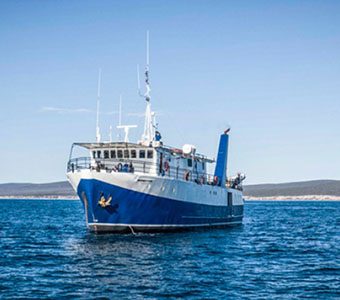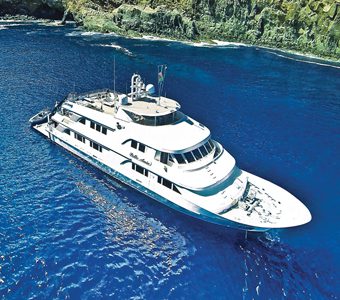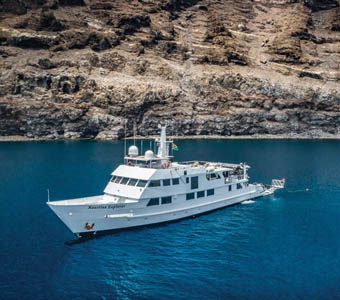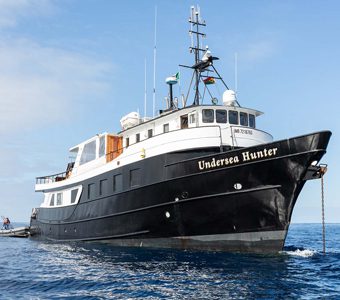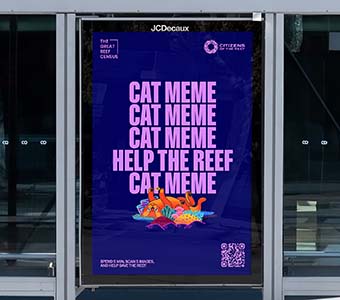A great white shark trip to the Neptune Islands off Port Lincoln, South Australia is an unforgettable experience. However, there is another aspect to these trips that is almost as good – a swim with Australian sea lions at Hopkins Island. Nigel Marsh tells us why it’s so special.
Australian sea lions are the world’s most playful and friendly pinnipeds (seals) and they are only found off South Australia and Western Australia, from the Pages Islands to the Abrolhos Islands. They use to be found over a larger area, but the population was decimated by hunters and fishers, and has never recovered. Listed as endangered, the Australian sea lion population continues to decline, with the population estimated at less than 7000.
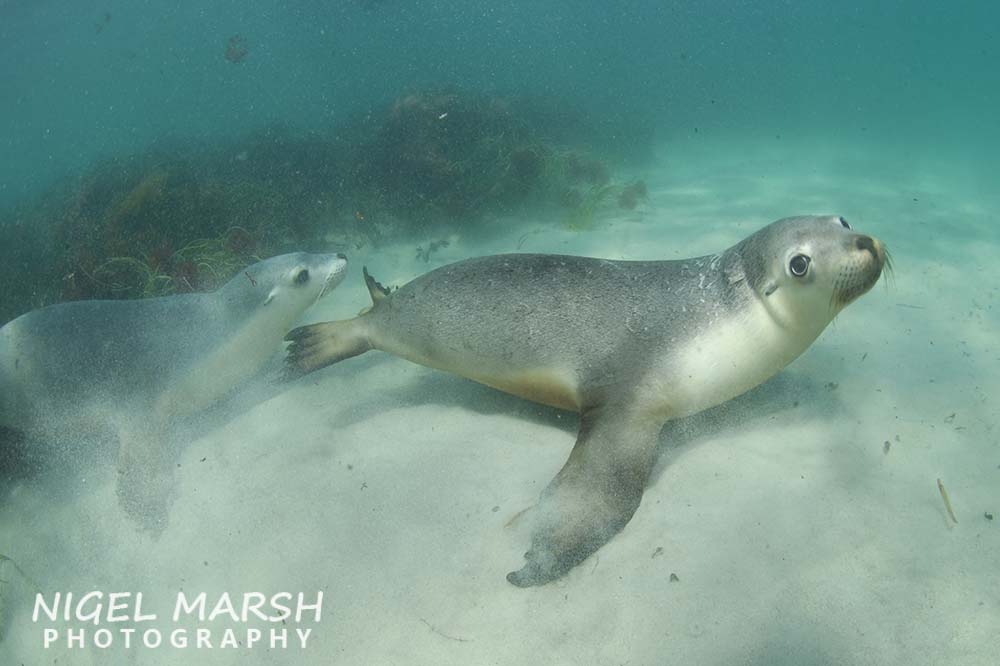
Recent studies of the species has identified 66 breeding colonies, mostly on offshore islands. However, dozens of haul out sites are also known, spots where the juveniles and sub-adults hangout.
One of these haul out sites is Hopkins Island, south of Port Lincoln. Unfortunately, the location is exposed to rough weather, so sometimes you miss out on swimming with these endearing creatures. Which has happened to me on every trip to Port Lincoln over the last 30 years. So, I was very happy on my most recent trip with Rodney Fox Shark Expeditions to finally get into the water with these underwater acrobats.
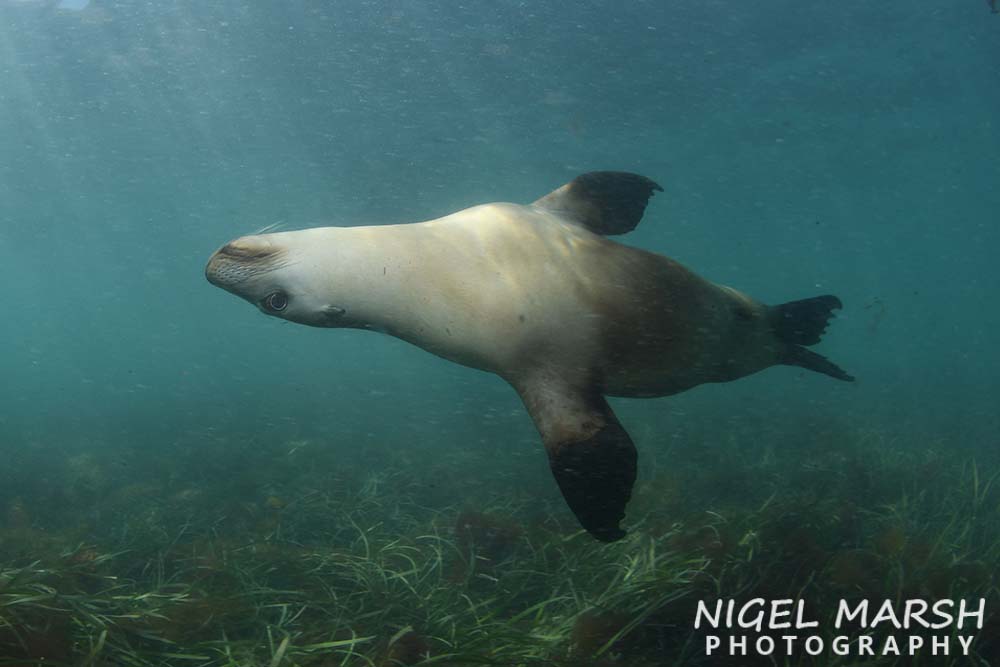
The conditions were still less than ideal for our trip in November when we anchored off Hopkins Island, with a wind chop and a small swell pushing into the cove where the sea lions rest. After 30 years of missing out on an experience with these sea lions I was ready to put up with anything.
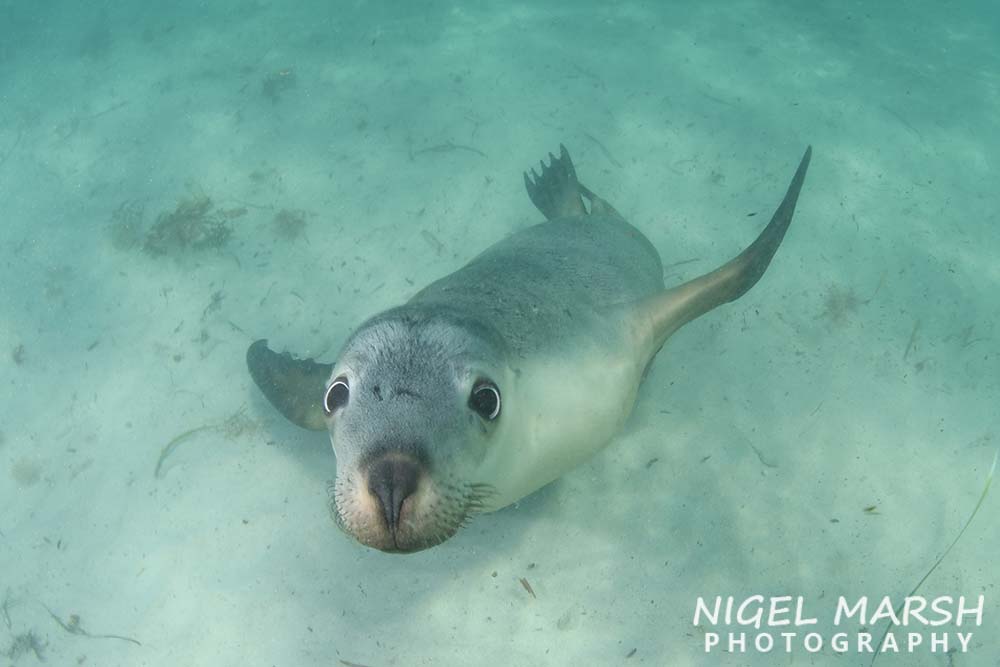
The crew gave as a briefing on the dos and don’ts. We only had one hour with the sea lions, and were not allowed on the island. With the depth only 2 to 3m, we had the choice of snorkel or scuba, I decided scuba just to make it easier for taking photos. We were then split into three groups so that we could be ferried across to the cove on the tender boat.
Rolling into the water, the visibility didn’t look great, only 3 to 6m, with a swell stirring up the sand. This was quickly forgotten as soon as the first sea lions arrived. Within minutes we had six of these cheeky sea lions swimming around us, closely inspecting us from every angle.

Most of the sea lions swimming around us were females, with a lovely silver/blonde colouration, and they were all friendly and curious. Having dived with their fur seal cousins numerous times, which never stop shooting around you, it was great to see how relaxed and chilled the sea lions were in comparison. They were happy to stop and stare at you in midwater or they would simply settle on the bottom to inspect you, sometimes piled on top of each other.
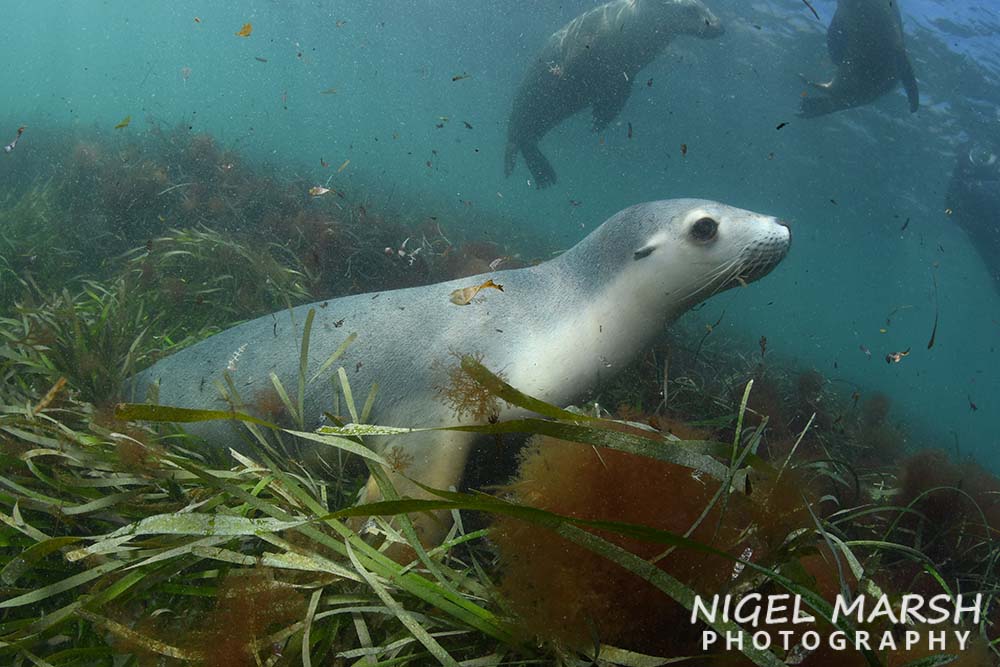
Occasionally they would disappear, off to play with another diver. So to lure them back I would do somersaults, barrel rolls or just wave my hands about. This often did the trick, with the curious sea lions coming close to see what you were doing or even join in the fun. We must have had twenty Australian sea lions in the water with us. On the beach I could see another forty that were happy to sun bathe and ignore us.
Our hour with the Australian sea lions of Hopkins Island passed all too quickly, but I left the water with a huge grin. My 30 year wait to dive with Australian sea lions was finally over and it was an experience I will never forget.

